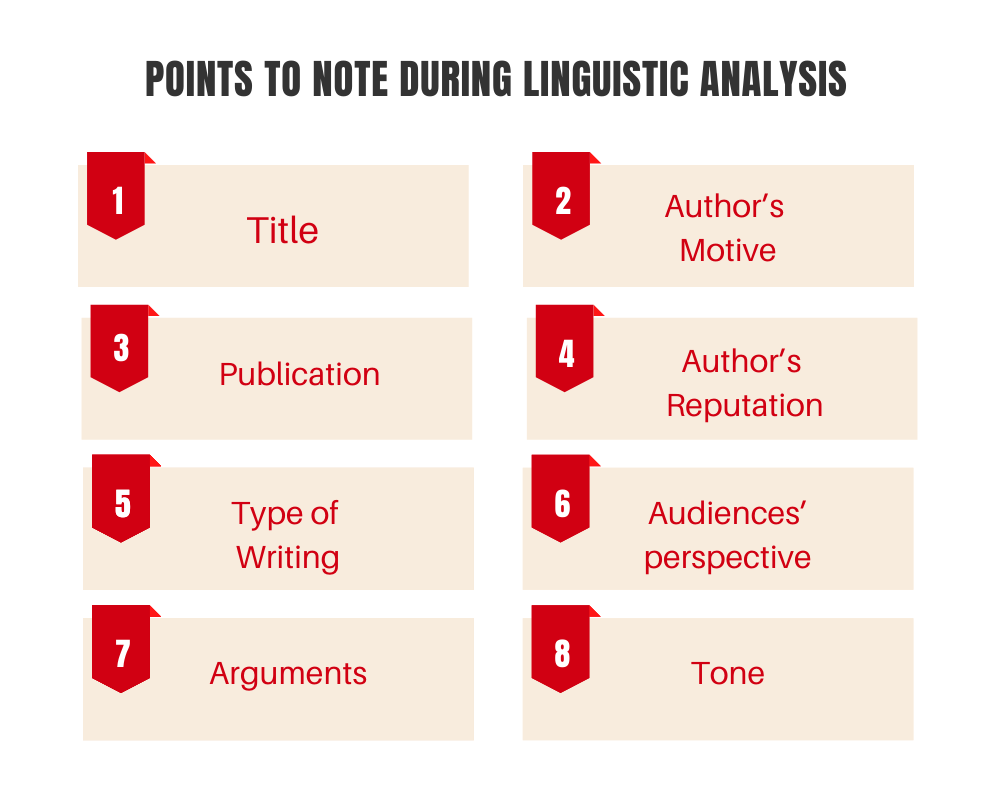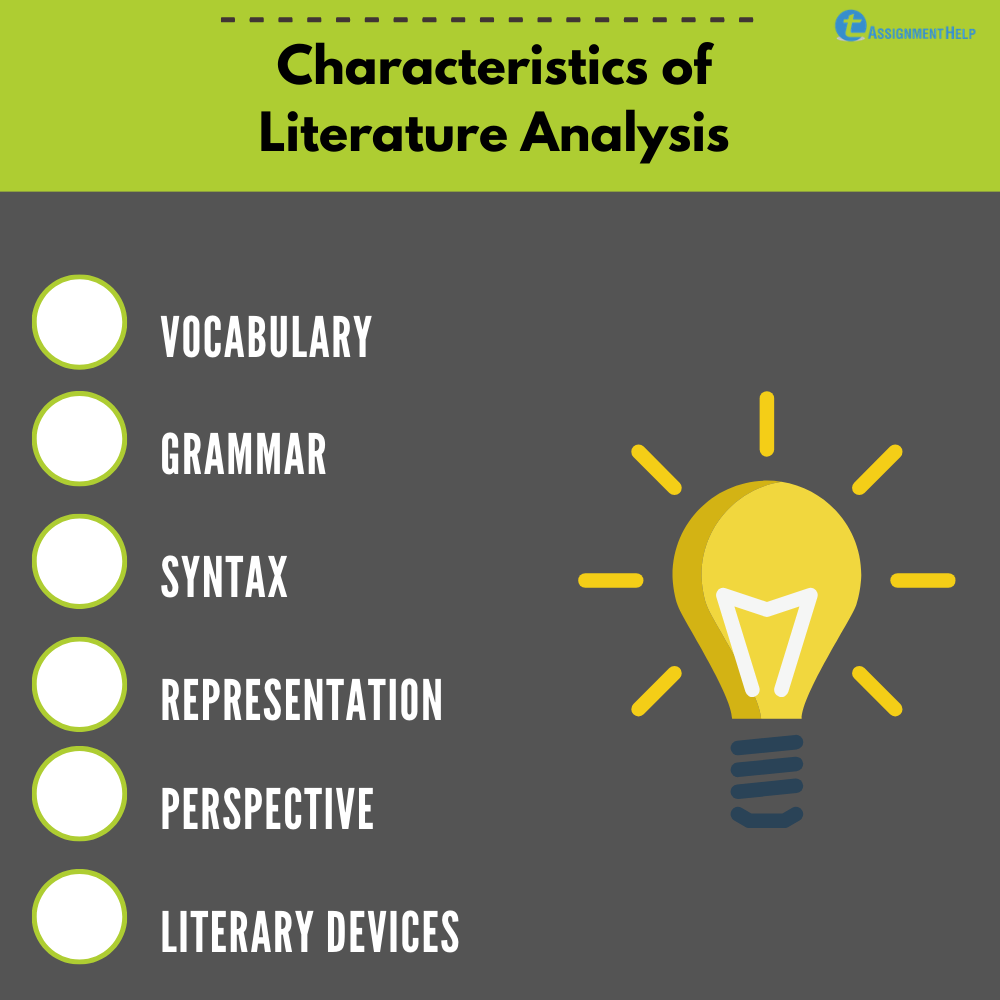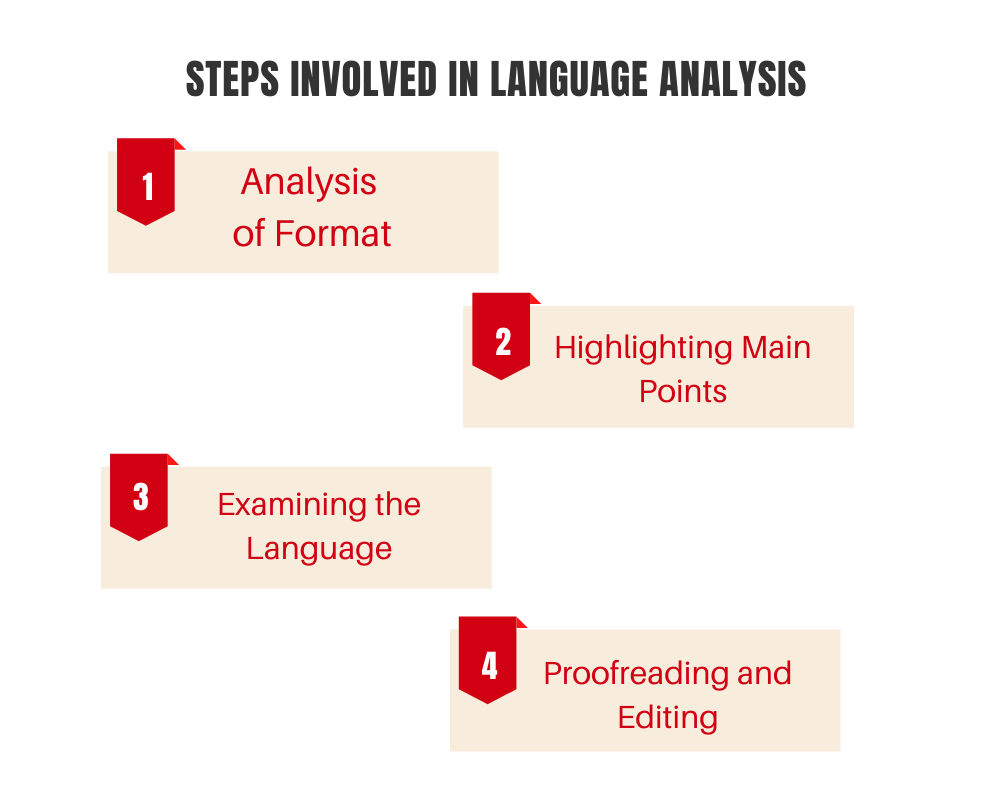We have been approached by a lot of confused students asking what is Language Analysis and how to master it? So, we are here presenting an article that will give you a crisp idea of Language Analysis. Assignments are the major criteria of assessment in the academic career of a student. Hence, it is the utmost responsibility of students to present an assignment with personable and reasonable language. Whatsoever effort a student put in to draft the assignment, if the language is not presentable and authentic, everything will go in vain. It is the dialect of the literature which provides life to the literature. Thus, having a hold on the language analysis will come very handy for the students, who are preparing their assignments.
Subscribe our YouTube channel for more related videos
This article will throw light on every aspect of the Language Analysis from the writer’s point of view. The article will be covering the aspects in the following order: –
- A brief definition of Language Analysis
- Various aspects of Language Analysis.
- A different characteristic of Language Analysis.
- Techniques to analyze the Language Analysis
Definition: Language Analysis, which is also known as ‘Analyzing argument’ implies the analysis of methodologies and ideologies implied by the author in the given literature in the first reading itself. Describing modestly, it is recognizing the context, the writer is trying to convey. The reader should understand the mood and tone of the writer by reading it. In the process of Language Analysis, the reader should take special effort in analyzing the various components like vocabulary, writing style, the structure of the sentence, etc. The good hold on the Language Analysis will enable the reader to understand the theme of the literature in the first reading itself.
Various Aspects: There are various aspects in the Language Analysis, of which a student must be aware about. Understanding the aspects helps us to understand the actual intentions and goals of the author. This section truly deals with the psychological outlook of the writer. Below are given certain aspects to be checked while reading the literature.
- Title: By reading, merely the title of the literature will give you an idea about its content. It will reduce the anticipation and confusion before having an encounter with humongous writings. The student should, therefore, provide an attractive and relevant title to the literature.
- The intention of the Author: While going through the literature, the reader must figure out the context, you have tried to convey. This will help in the persuasive reading of the whole literature, no matter how much long and humongous it is.
- Publication: Reputed publications keep certain quality and thresholds for their literature. You may also observe that some publications have devoted themselves for a certain genre of works. If well acquainted with the publications, the reader can estimate the theme and quality of the work.
- Author: Along with the publication, you should note the name of the author. As we know, some authors prefer special style or genre of works. For instance, authors like Arthur Conan Doyle and Agatha Christie usually write crime thriller stories. The name of the author is the stronger indicator of the inside content than that of the publisher.
- Type of work: The reader should be informed about the type of literature he is going to deal with. Distinguish, whether it is a column, poem, story, editorial, speech, letter or any other sort of literature. It will mentally prepare him to understand the context.
- Audience: Every aspect of the literature depends on the type of audience and its demands. Hence the writer should be able to deliver a work meeting the expectations and needs of the audience. If the audience is well scholarly, then submitting a below-par work will end up in a great disaster. In the same way, if the audience consists of ordinary individuals, a layman approach to the language will be enough.
- Nature of Arguments An author makes it clear in his work, whether he supports a cause or not. So the author must depict his arguments which are supported by valid resources.
- Tone: The tone is synonymous with the Nature of Arguments sections. The aspect that makes it different is that it reflects the attitude of the author. Instead of wavering tones most of the writers take an approach of steady phase. It is the author’s arguments that put his tone under the limelight.
Different Characteristics
This section analyses the qualitative aspect of the literature. While going through the content of the work, the student should notify the way of writing ad expression of ideas. A person requires good knowledge of the language and a very good hold on the grammar to carry out this analysis. If the reader can Carry out this step, the process of language analysis will be very easy for him. I take the author’s point of view, he should portray great skill in writing skills. Below are given the various characteristics of Literature Analysis. As this seems a very trivial matter but hard to follow, we recommend you to go through the below list thoroughly.
- Vocabulary: This section shows, how much the author is versatile and adept in the used language. The wrong use of words may change the whole idea altogether. The writer must possess great skill in jumbling with the words. The versatile use of appropriate words at the required position will give an academic and scholarly touch to the work. This aspect gets tricky while writing literature like a poem. The writer is required to convey his ideas using the most appropriate and beautiful selection of words. Showcasing a brilliant piece of vocabulary in the work is a great challenge to the writer, but it will leave an everlasting impact on the reader.
- Grammar: Grammar is another characteristic which leaves a decent impact on the reader. Although some writers compromise with the grammar to follow their way of writing, we recommend you to strictly follow the grammar of the language. There is a strong chance that the reader will show aversion after reading the work depicting poor grammar. It is very hard for the reader to contemplate whether the reader the author has used incorrect grammar deliberately or not.
- Syntax: This section evaluates the use of certain characteristics like the structure of the sentence and usage of the punctuations. There are no hard and fast rules of sentence structure and punctuation. The writer has freedom these alter these characteristics according to his will. Although in academic writing, the reader expects the writer to use punctuations and structures following the rules of grammar as the audience are mostly the scholarly ones. The absence of punctuations may affect the effortless reading of the work.
- Pictorial representations: The use of pictorial representations is done to sustain the interest of the reader in the literature. The pictures or graphs used must be relevant to the content provided on the page, otherwise, it will generate confusion among the readers. The representation with appropriate symbolization will help the reader to grasp the original idea and feel the writer is trying to convey.
- Viewpoint: This will reflect the opinion of the writer towards a specific issue or topic. The arguments he is making and the pieces of evidence chosen to support it will display his viewpoints. Whatever views an author puts forward in his work, it should be authentic and should be devoid of any duplicity.
- Personification: In the process of personification, an author compares or symbolizes a nonliving thing to a living thing. Personification is generally used in the academic assignments related to arts. In technical assignments like that of MBA and Engineering, personification is not at all recommended. Good use of personification displays the innovative imaginations of a writer.
- Alliteration: The usage of words to facilitate the repetition of the same sound or syllable is alliteration. Like Personification, these characteristics are also used in arts assignments or works only. This section portrays the vocabulary ability of the writer to arrange the words in an impressive order. Alliterations are majorly seen in poems. The presence of alliteration provides a separate charm to the poems and makes it interesting for the reader to recite it.
- Metaphor: These are the usages which make the language very interesting. This is a figure of speech which displays the implied comparison. The usage like “I am drowning in a sea of grief” is a typical example of a metaphor. The usage of metaphor provides a simulating touch to the content and grabs the reader’s attention.
Techniques for Language Analysis
This section will prove to be very handy to the students who are interested in Language Analysis. To draft an assignment that meets all the expectations of the reader, a student must have a good hold on these techniques. From a reader’s point of view, if he knows the basics of language analysis, he may tell various characteristics of the author like his style of writing, point of interest, etc. Below are given some of the language analysis techniques.
- Analysis of the format: First of all, a student should realize the main idea and purpose of the language analysis, since, there is no point in learning all this without knowing the actual motive. After this, the student should go through all the methods used in the language analysis process and get well acquainted with it. It should make a great impact on your efforts if you get habituated with the various techniques used by the writers.
- Highlighting main points: In this stage, you should collect various related materials and make relevant notes from it. Go through the notes and create a mind map. This approach will aid you in drafting the analysis section elaborately and effectively. All the intentions and arguments of the author should be kept in mind, which will facilitate the collection of evidence and data on the right track.
- Examining the use of language:
To conduct this step, the student must have a clear idea of the language used and the tone of the author. For this, the student should thoroughly go through the content and validate the quality of the work. While the process of reading the student should take special note of the word selection and the depth in vocabulary. Instead of going for the literal meaning of the words, the student should understand the context and derive out the hidden meaning.
The argument made by the writer should be given the utmost importance. It is his argument which will be the backbone of the language analysis. Whereas you should also check the critical thinking capability and his logical implications in the work. You should also keep eye on the characteristics like the use of metaphor which will display hoe deeply the writer was indulged in the process. - Proofreading and final touches: Look for any grammatical error, contextual error and typo errors in the solution. After going through the whole paper again, give a very catchy title to the paper. Special care should give in following the correct format of referencing to eliminate the risk of plagiarism.
If you follow these techniques, you will surely end up drafting an impeccable language analysis. I hope we have solved your query regarding Language Analysis. Keep sending us queries. Our technical and experts will always be ready to provide you with relevant solutions. Thanks for standing by.







